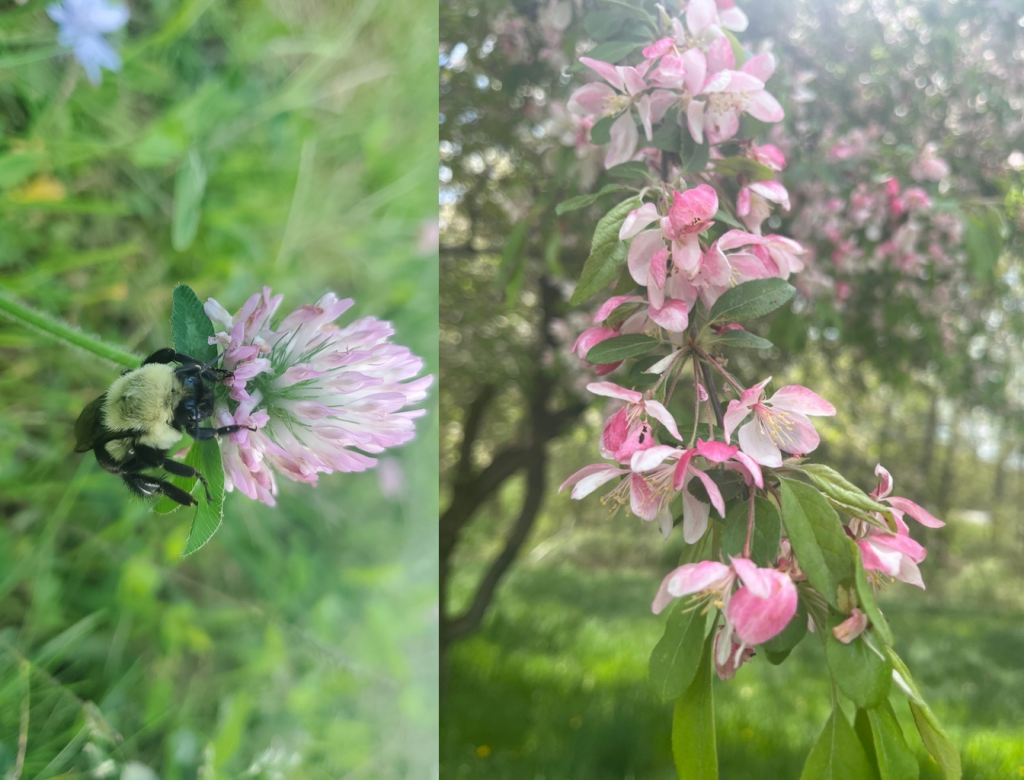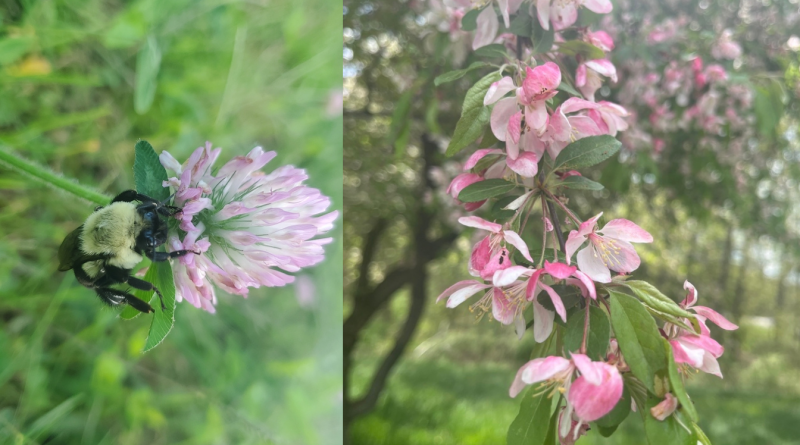April Biodiversity Duo of the Month: Common Eastern Bumblebee and Crabapple Tree

The Biodiversity of SUNY New Paltz project’s April 2025 Duo of the Month are common eastern bumblebees (Bombus impatiens) and crabapple trees (Malus sp.).
The common eastern bumblebee (Bombus impatiens) is a large, fuzzy bee that is mostly black with a yellow thorax, or midsection. These bumblebees are the most encountered species of bee in the northeastern U.S.
Common eastern bumblebee queens are among the earliest bees to emerge from hibernation in early spring, and they have a monumental task ahead of them – laying tons of eggs and establishing an entire bee colony!
Bumblebees live together in colonies, with each bee assigned a specific role in the colony. (This is very different from the many species of solitary bees that are native to our area.) Bumblebees form their nests in the ground, sometimes in abandoned rodent burrows.
They are generalist pollinators, meaning that they collect pollen and nectar from many different kinds of flowers. Many bumblebees occupy the role of collecting pollen and nectar for the colony. These bees can be observed with full corbiculae or “pollen baskets”- special concave structures on the legs of bumblebees that can be used to store pollen as it is being collected. While bumblebees do not use pollen to make honey, they do use pollen to feed larvae and to make wax “pots” that they store nectar in.
With some of the earliest blooming flowers in spring, crabapple trees (Malus sp.) are an essential source of food for queen bees who, in April, are beginning to emerge from the underground dens where they hibernated over the winter. Crabapple trees are small to medium sized trees in the Rose family (Rosaceae).
On campus, we have many cultivars of crabapples, which means they have been selectively bred to have different color flowers and fruits (mainly pink and purple) – native crabapple flowers are white. Crabapple trees also hold onto their fruit long after leaves begin to fall, providing a valuable source of food for animals during the winter.
Towards the end of April, stop and admire the many flowers of the crabapple trees that line the main path of the Arts & Sciences Quad — you’re likely to meet some fluffy bumble bees there! And don’t worry, bumble bees are not aggressive; they sting only when provoked. As they go about their day, they pollinate many types of flowers, making them key members of our ecosystem.
To learn more about the incredible biodiversity on campus, watch out for May’s Duo in the Digest, visit our Biodiversity of SUNY New Paltz catalogue on iNaturalist.org, and stay tuned for a future campus biodiversity walking tour.

